Ultimate Guide to Exercises for Lumbar Herniated Disc Relief 2
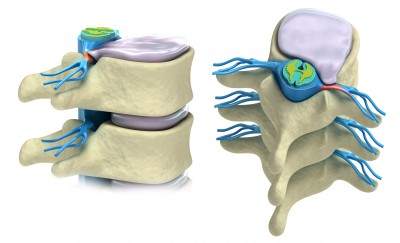
Did you find our previous article, “Disc Herniation Part 1,” helpful but are still battling discomfort? Are you eager to discover exercises that can effectively reposition your herniated disc and enhance your well-being? You’re in the right place.
In this comprehensive guide, we’ll cover:
- Effective Exercises for Repositioning a Herniated Disc: Learn the top movements to gently coax your disc back into alignment, reducing pain and improving mobility.
- Stabilization Techniques to Prevent Disc Displacement: Discover exercises that strengthen your core and back, ensuring your discs stay in place.
Understanding Lumbar Disc Herniation:
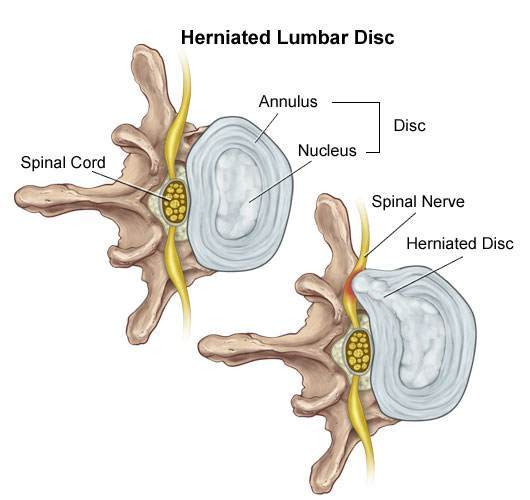
A herniated disc occurs when the disc’s nucleus breaks through the annulus, as shown in the illustration from neurosciences.beaumont.edu. But what triggers this displacement? The primary culprit is forward bending, which compresses the disc (think of it as a jelly-filled doughnut) and can lead to the annulus fracturing, allowing the nucleus to protrude and press against nerves.
Why Does it Hurt?
The disc’s exterior is tough cartilage, while its interior is softer, akin to mucus. Applying pressure on one side forces the inner material to the opposite side, similar to squeezing a doughnut. When a herniated disc or inflammation puts pressure on a nerve, pain ensues. The key to relief is applying counterpressure to reposition the disc.
For a deeper dive into herniated discs, refer to “Disc Herniation Part 1: Best Self-Treatments for Lumbar Disc Herniation.“
How to Apply Counterpressure:
The strategy involves bending your spine backwards or into the extension to shift the disc away from the nerve.
Exercises to Reposition a Herniated Disc: Note of Caution:
Initially, these exercises might intensify your pain slightly. If pain significantly worsens or radiates further down your leg during these exercises, cease immediately and consult a professional.
Exercises for Lumbar Herniated Disc
#1 Prone Lying Lumbar Herniated Disc
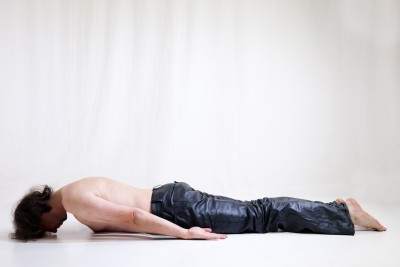
- Lie face down or prone in bed with your elbows tucked in under your side:
- As soon as you get up in the morning you should lie prone (face down). By getting in this position, your lower back becomes more arched, or as doctors say, you increase your lordosis.
- The increased lordosis pushes on the back of the disc helping to bring the nucleus forward into the correct position.
#2 Sphinx pose in Yoga For Lumbar Herniated Disc
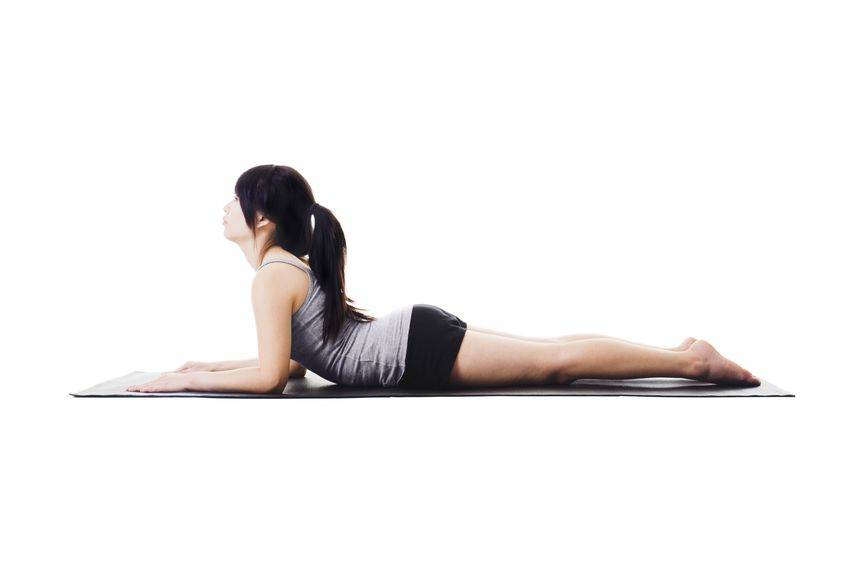
- Get into the prone position lying down on your stomach.
- Next, get on your elbows. If you have a hard time with this position go back into the prone lying position.
- Do these exercises hold each time for 1-2 seconds 6-8 times per set? This exercise can be repeated every two hours throughout the day.
Asses yourself. If the pain has decreased or the pain has moved away from the leg or thigh and into the hip or buttock, this is an improvement. Even if the pain is increased in the back but relieved in the leg this is an improvement and a green light that you should continue this exercise. You also get a green light if there is no difference at all.
- If your self-assessment gives you the green light, move on to the Cobra exercises just below.
- If your thigh or leg pain is worse, then stop right away.
- If your lower back, thighs and legs are the same you get a green light, so move on to the Cobra exercises.
#3 Cobras For Lumbar Herniated Disc
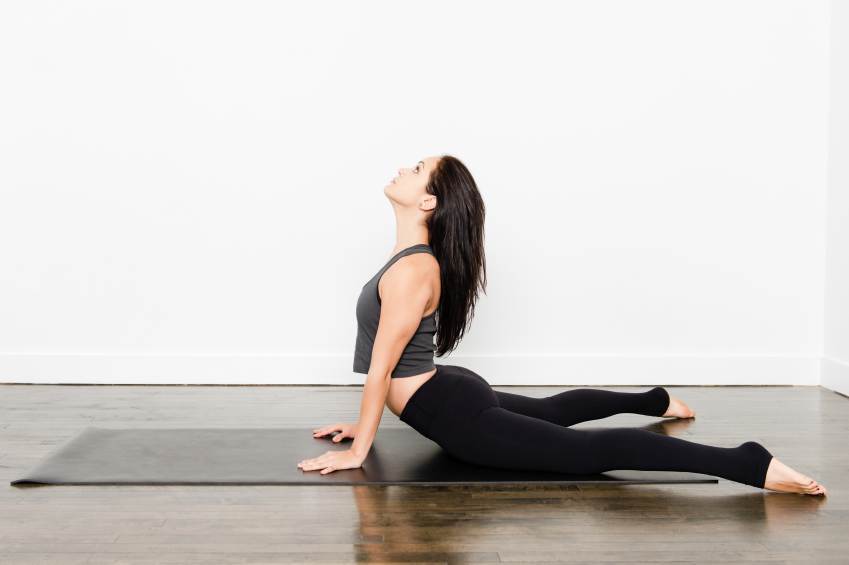
- Lie down face down with your hands underneath your shoulders.
- Push up from as high as you can until your lower back stops you or your elbows are straight.
- The pelvis should still be on the floor and the lower back muscles relaxed.
- Do these exercises hold each time for 1-2 seconds 6-8 times per set? This exercise can be repeated every two hours throughout the day.
Asses yourself. If the pain has decreased or the pain has moved away from the leg or thigh and into the hip or buttock, this is an improvement. Even if the pain is increased in the back but relieved in the leg this is an improvement and a green light that you should continue this exercise. If your thigh or leg pain is worse, then stop right away.
#4 Standing Extensions Lumbar Herniated Disc
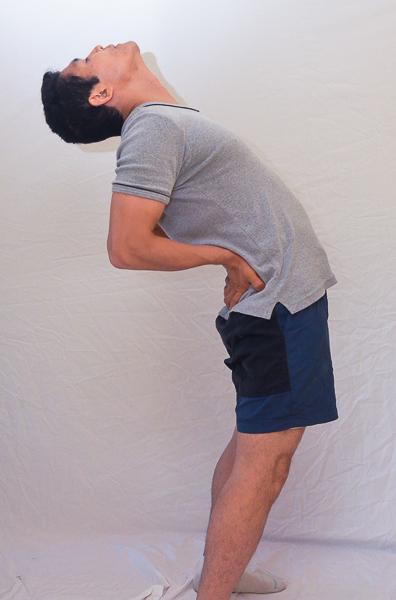
- Stand straight and put your hands behind your hips with your fingers facing down.
- Push your hands into your pelvis so that your lower back arches.
- Don’t use your lower back muscles
- These exercises can be done 6-8 times for 1-2 seconds. This exercise can be repeated every two hours throughout the day.
Stabilization Exercises: Prevent Your Disc From Coming Out By Having A Stable Spine.
#1 Cat-Camel or Cat-Camel For Herniated Disc
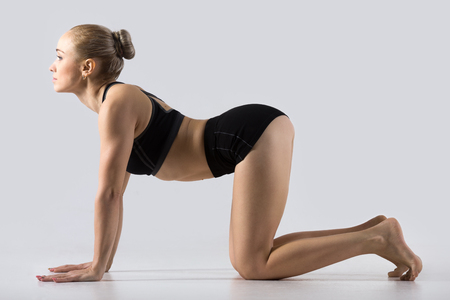
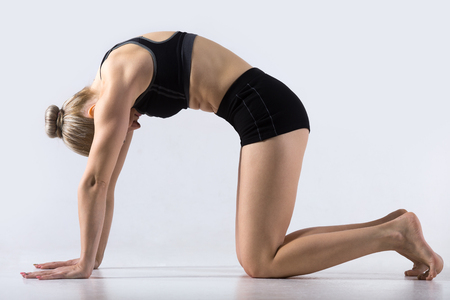
- On all fours with your knees under your hips and hands under your shoulders.
- Inhale and let your belly fall downwards toward the floor as you look up toward the ceiling for 2 seconds.
- Exhale and arch your back up as far as it will go or until you feel pain. You should not feel pain with this exercise, otherwise you are going too high.
- At the same time bend your neck forward and look toward your navel.
#2 Curl-Ups
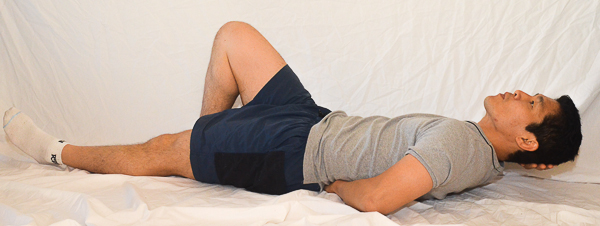
- To start, one foot is bent and the other is straight.
- One forearm goes under the arch of your lower back to support it.
- The other arm is supporting your head.
- Your head and neck come up as one block until your shoulder blades clear the floor.
- Do three sets of 5 working your way up to 10. If it’s easy, then hold for a couple of breaths.
#3 Squats
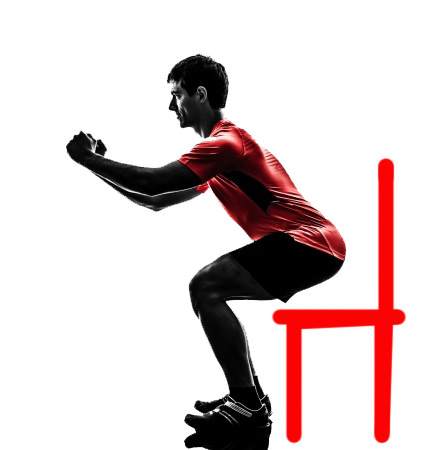
- Stand in front of a chair as if you are going to sit on it.
- Stand with your feet facing slightly more outward than your knee.
- Make sure your butt comes out, and keep lowering your butt until you touch the chair.
- Practice 3 sets of 10.
#4 Bird Dog
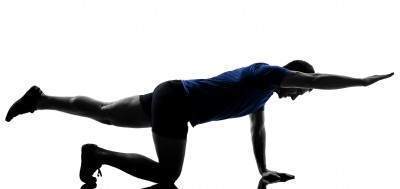
- Get into a crawling position with your hands and feet shoulder-width apart.
- Harden your core by contracting your abs and lower back. This is called bracing.
- Lift your arm first. If this is easy, then lift your leg only. If that is easy, then lift the opposite legs and arms, for example, right leg, and left arm.
- Want to make it tougher? Try lifting an arm and leg on the same side.
- 3 sets of 10. If you are shaking a little or cannot balance quite right, you’re doing the right exercise for you, i.e. lifting just the leg or arm might be easy, but lifting opposite arms and legs might put you off-balance a bit. Make sure you are stable before going to the advanced bird dog.
Tell us what you think in the comments below and like us on Facebook. This Toronto Downtown Chiropractor will answer all questions in the comments section. Let us know your vote for the best Toronto chiropractor in the comments section.
References
1. J Med Genet 2002;39:387-390 doi:10.1136/jmg.39.6.387


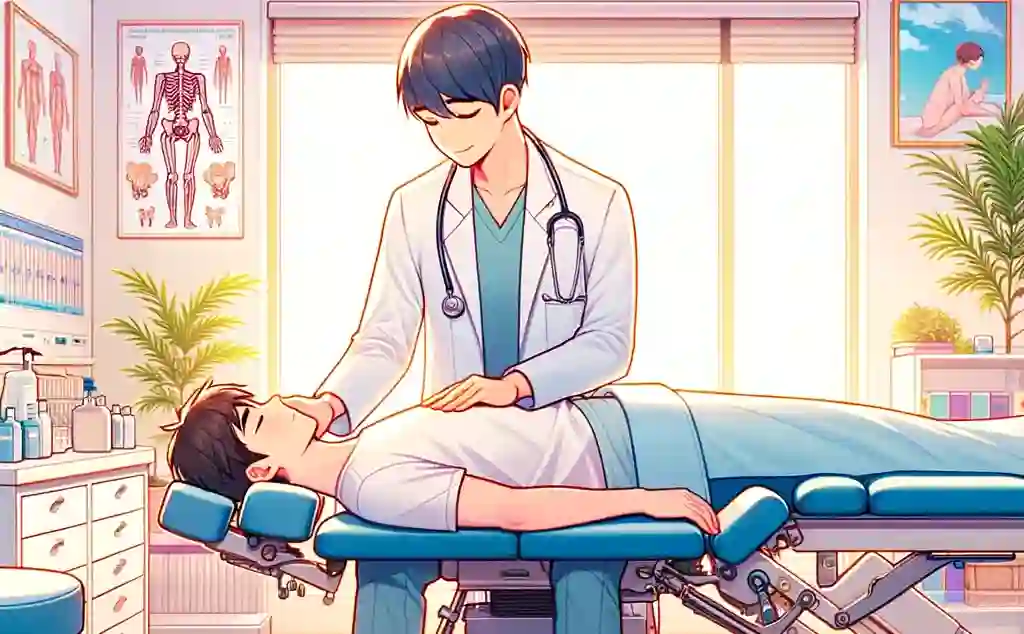
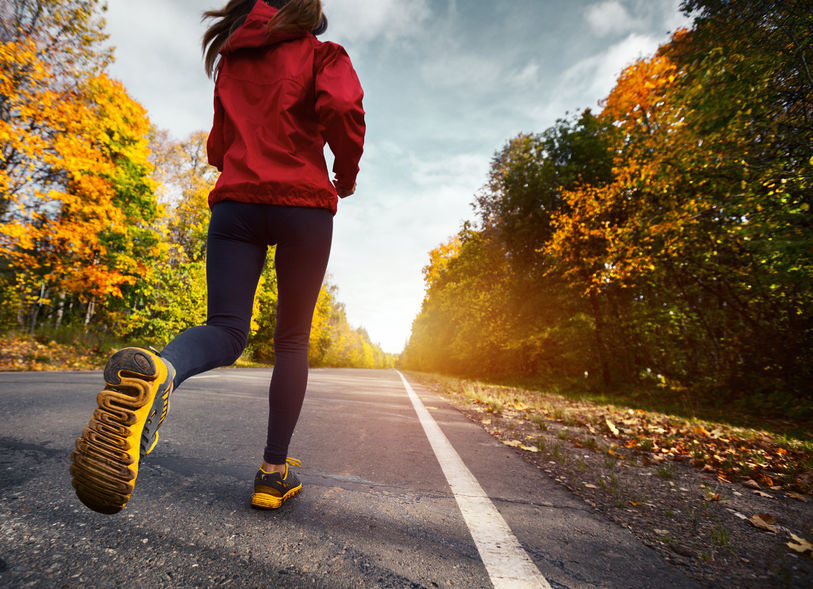
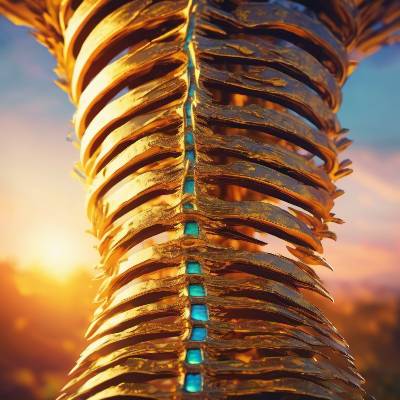
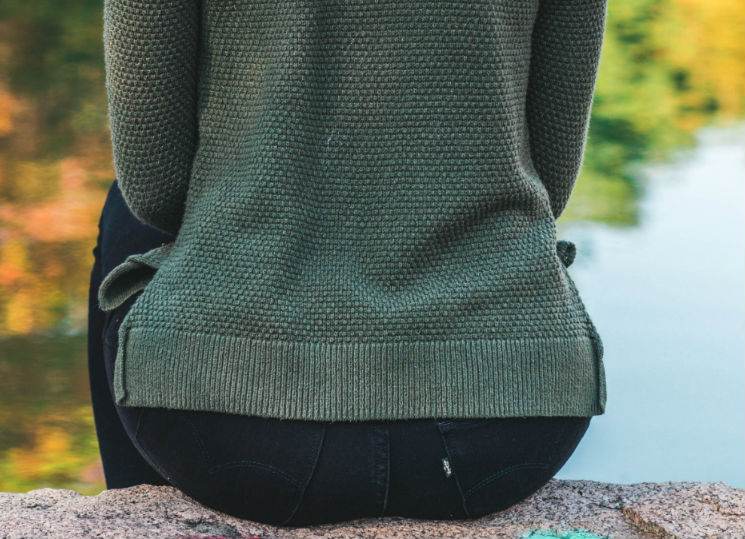
Good to see your advices. Thankyou.
From my MRI scan in 2011, the impressions found are –
1) Degenerative discovertebral changes
2) Posterocentral disc protrusion at L3-L4 causing thecal sac compression with narrowing of bilateral neural foramina.
3) Disc extrusion at L4-L5 causing moderate canal compromise leading to compression of cauda equina and bilateral exiting nerve roots.
4) Diffuse posterior disc bulge at L5-S1 causing thecal sac compression with mild narrowing of bilateral neural foramina.
Disc desiccation seen at L4-L5 as T2 signal loss.
Kindly let me know the severity of the above diagnosis as well as advise me on the exercises for the above. Want to avoid the stage of surgery.
Thankyou
Author
Thanks for your question RK. Providing that the disc herniations are causing your pain the exercises are not likely to help due to the number of discs and the severity. I wouldn’t do the exercises, especially if you have bowel & bladder issues. In summary don’t do the exercises.
Hope your disc herniations get better.
Dear Doctor,
Thankyou for your kind reply. I am 35 age and 74 kg weight with 5’5 ft. height. I am presently doing spine extension exercises. I am not having any pains. The thing is that sitting continuously for more than 20 minutes or standing for more than 15 minutes causes inconvenience in my lower back. Except that i am not suffering from any pain. I do not have any bowel or bladder issues till now. I do not have any other complications / diseases such as diabetes / BP / ortho related or whatever.
Can i continue my spine extension exercises?
Is there any chance for me to avoid surgery in future?
In the month of October 2011, all of a sudden i collapsed to bed, not even able to move my legs and it is said to be as spine stroke. I have recovered slowly through physiotherapy treatment and got my MRI scan done. The diagnosis of the same has been submitted to you in my previous message. At that time i had a left leg pain and the pain has been gradually reduced. From then to till now, i am not having any pain. I feel very much strained for couple of days when if any day, i work throughout the day without bed rest from morning to evening continuously.
When i consult the Ortho experts, they said that the only way for this problem of disc slip is doing exercises and that if spine extension exercises are being continued without fail for life-time, i may not have to face any surgery.
Please let me know –
– whether i can continue exercises
– scope of moving to surgery as per my case history stated above and in my previous message
– any other advises on do’s & dont’s
Doctor, Kindly provide with your valuable advises as per my present condition stated above.
Waiting for your valuable advice and guidance.
Thankyou
Author
Thanks for your question RK. I have no experience with “spinal stroke” and have only heard about it and certainly have not treated as that is out of my scope of practice.
Hope you get better soon.
L5S1 Disc Protrusion checking in. Been almost 2 years now, pain gets worse every so often but remains lingering around. Still getting sciatica. After several physios, finally onto a pilates program doing twice a week, just core strengthening exercises. Mckenzie isn’t working for me anymore with the sciatica pain. I get nerve pain just lying in the prone position.
Any advice?
Cheers
Author
Thanks for your question John. Sounds like you have shifted your disc which is very common. Sometimes it’s shifts to the other side other times it can shift so that you need to do flexion exercises, other times you need to do side exercises.
Hope that helps your understanding of disc protrusions.
Dear Doctor,
I have been in pain for two years straight.
My mri from last year shows diffuse herniation thecal sac effacement..moderate bilateral neuroforaminal narrowing with encroachment on the exiting nerve root, along with posterior bone spurring at L5-S1.
Does arching exercises help with diffuse herniations, end plate changes and posterior spurring or is it more for focal herniations only?
Do you know anything about modic changes in DDD? And also at this point in the game would conservative treatment help me or would surgery be a better option? And if so, what type of surgery?
Keyhole? Laminectomy? Also, arent repeat surgeries usually typical after so many years, as spurring or ligament or joint thickening seems probable? I am 46 yrs old and my life came to a dramatic turn for the worse two years ago and your expert information would be most welcomed and appreciated.
I have heard that persons with modic type issues benefit from taking amoxicillin daily for up to one full year.. I am not a doctor but I was reading research papers written doctors. Maybe you should look into this.
Lisa
Author
Thanks for your question Lisa.
Your question: Does arching exercises help with diffuse herniations, end plate changes and posterior spurring or is it more for focal herniations only?
Answer: The exercises helps with all kind of herniations whether they are diffuse or focal. They don’t helps with end plate changes or posterior spurring but they do help the symptoms and pain from some types of end plate changes like a vertical herniation.
Question: Do you know anything about modic changes in DDD? And also at this point in the game would conservative treatment help me or would surgery be a better option? And if so, what type of surgery?
Answer: Modic II type changes which is a MRI terminology is sometimes (according to some most of the time) associated with infection in the disc. If you take Antibiotics for 100 days they found the people with the Modic II changes benefited. Surgery is not based on how long you’ve had the problem but one if conservative therapy has failed, the disc sticking out more than 8mm. Progressive neuromuscular degeneration. ie your muscles are wasting away or you have drop foot that is getting worse.
They don’t do keyhole for microdisectomies but they do if they are inserting a needle into the disc and trying vapourize the nucleus it is less cutting. Fusion requires more cutting and is major surgery with major failures.
You should do conservative therapy for 6-12 months first before thinking about surgery. Also there are cortisone injections which may help conservative therapy if you get stuck.
Hope that helps your disc herniation.
Thank you sincerely for your reply..
My CT scan shows that it is the posterior spurring that is encroaching on the nerve root and while I don’t care for surgery, I’m not sure that conservative measures will assist in anything other than strengthening and pushing a herniated disc back in…so my question is..in what way specifically would conservative measures help when bone spurring is seen to be the main culprit in compressing the nerve root in my case
Thank you
Author
Thanks for your question Lisa. The bottom line is the exercises help with pain and pressure on the nerve. The spurring notwithstanding you won’t know if exercises will help if you don’t try. You and the doctors actually don’t know if that is the main culprit of your pain is the disc or spurring. Either can be causing your pain, or more likely a bit of both. MRI and CAT scans and X-rays have been found through research to be not correlated to pain. Tons of research out there.
The research says osteoarthritis and spurring have no correlation to pain. In other words I have found 40 years with very little wear and tear with lots of pain and some people with lots of degeneration with no pain at all. The same goes for disc herniations 30% of 30 year olds and 60% of 60 years olds with no pain had showed disc herniations with MRI scans. Again no correlation.
Also both usually cause the same type of pain in the same area depending on where the disc herniation and the spurring is. It is also normal to have both going on at the same time. To say with certainty that is mostly from the spurring is simply spurious in my opinion.
If you don’t want to try that’s up to you. If you do the exercises you need to make sure they are supervised by a health practitioner.
Hope that helps your understanding that what you see isn’t always the cause of pain.
Dear Dr. Nakamura:
My MRI report reads “disc protrusion compatible with a disc herniation.” What does it mean exactly? Is it bulging or is it indeed herniation? Thank you.
Author
Thanks for your question Kostas. It really depends on who you ask. Either way your disc is bulging out you can call it a disc protrusion or disc herniation. That isn’t the important part. The question is this, “Is this disc herniation causing you pain”.
30% of 30 year old have disc herniations with no pain.
Did you get diagnosed by MRI or were you actually diagnosed by the history and exam and confirmed by your MRI.
Hope that helps your possible diagnosis of disc protrusion or disc herniation.
Thank you for your reply, Dr. Nakamura. The reason I asked whether this is herniation is because I fail to see how stretching exercises (like the Cobras) would help my case. I do it since I started having pain. My doctor (pathologist) says it’s herniation. A physiotherapist I saw says it’s not absolutely clear that it’s herniation (i.e. jelly leaking). I am making an appointment to see a neurologist, but this may take a long time in Montreal. Your articles are very informative. As I said, I just cannot see (from the pictures and diagrams) how cobras help the disc since with herniation there is no dislocation (or is there?). Thank you again. Is it possible to make an appointment to see you in Toronto?
Author
Thanks for your question Kostas. For most types of disc herniations the exercises put pressure on the back of the disc. If you think of the disc like a jelly doughnut if you push one side hard enough it will come out or bulge out. Providing that the disc isn’t fully pushed out too (a lot of the jelly is pushed out), the exercises will help the type of herniation that the vast majority of people get.
If you want to make an appointment you should email info@rebalancetoronto.com or phone 416-777-9999. The receptionists know my schedule better than I do.
Hope that helps your possible disc herniation.
Hello Doctor, I am anita female 40 year lold, last two months I have pain in my right leg. My MRI report Opinion are as follows..
-Lumbar SPONDYLOTIC CHANGES WITH POSTERIOR ANNULAR TEARS IN L3-4 TO L5-L1 Discs.
-MILD COMPRESSION OF THECAL SAC AT L3-4 AND L4-5 Due to DIFFUSE CIRCUMFERENTIAL BULDING OF DISCS
-MODERATE COMPRESSION OF THECAL SAC AND RIGHT SIDED COMPRESSIVE RADICULOPATHY AT LS-S1 DUE TO POSTERIOR OSTEOPHYTIC RIDGES, DIFFUSE CIRCUMFERENTIAL BULGING AND RIGHT POSTEROCENTRAL EXTRUSION OF DISCS WITH SLIGHT CADDAL EXTENSION.
(CONTRAST ENHANSED SCAN MAY BE MORE INFORMATIVE TO RULE OUT REMOTE POSSIBILITY OF ASSOCIATED SMALL INTRADURAL MASS ALONG WITH DISC EXTRUSION AT L5-S1).
Pl guide me what can I do…
Author
Thanks for your question Anita. I recommend you see a health professional that can examine you. If your pain is related to your MRI than you have quite a bit of pressure on your nerve from your disc.
In your case the exercises have a higher chance of making you worse. They may make you better but it is not likely.
Hope that helps your disc herniation.
sir i got numbnes after doing exercises, i had stopped it, but numbness continuing while walking, will the numbness caused by Mackenzie exercise will go?????
Author
Thanks for your question Sravan.
So I assume you are saying this is new in addition to the burning feeling in both thighs. If you are actually getting numbness instead of burning that is actually good. If it is further down the leg and past your knee where you did not have pain before than you might be getting worse.
Any exercise can make you worse so you have to be careful. You should be seen by a health professional. Sometimes people go too aggressive and others are doing the exercise wrong, for others it is the wrong exercise.
Hope that helps your possible disc herniation.
thank you sir, iam getting numbness in foot, can i do exercise, i had disc herniation in L5-s1, iam sravan sir
Author
Thanks for your comment Sravan. Like I said if the pain or any symptoms go further down the leg the exercises are not for you. You should stop the exercises.
disc dessciation with diffuse disc bulge and posterocentral disc extrusion at l5-s1 indenting nerves with bilateral neural foraminal narrowing. from past 2 months i am taking bed rest, i just walk in home for 15 to 20 minuates daily, what i have to do any exercise. iam getting burning sensations on both thighs some times it bearable. help me, iam suffering this from past 2 months
This is my MRI report 1 month ago, doctor said me bed rest, iam now on bed rest. i can walk in home, going to wash room comfortably, but sometimes there is burning sensation in both thighs but it berable, can i do exercise please help me, iam just 24 years old’ is my disc herniation curable? Please reply sir iam waiting
Author
Thanks for your question. Please keep in mind you can can get lower back pain for many reasons. Assuming the diagnosis is correct than you should not be having bed rest. This fact has been has been proven over and over the past 20 years or more. You really need a new doctor if your doctor is so out of date. There are almost no exceptions except surgery. Then you need a very short period of bed rest after surgery.
You should try the exercises in this article assuming the diagnosis is correct. Any exercise can make you worse. If the pain increases or any symptoms go further down the leg than you should stop the exercises.
Hope that helps your possible disc herniation.
Dear Dr. Nakamura Im amazed to see that how much you are helping people by replying to almost every question. That encouraged me to ask question related to my Disc herniation at L4/L5 central. I got used medicine for more than two months with lot of bed rest. I start feeling better but now as I have to sit for long times about 10-15 hours a day, my problem is getting back. I feel pain in back when I stand aftedr sitting for some time. I could not stand straight for about 1 minute as it feel pain and then slowly I can stand straight. I also feel pain in my lower limbs and cant walk for long times. I am doing few exercises that a Physio recommended me but with little comfort. Kindly guide me should I proceeds with your proposed exercises and how extensively. Any care that I need to do? Looking forward to your kind reply. I really appreciate your help. Thanks!
Author
Thanks for your question Javaid. First you should not have had a lot of bed rest. I certainly hope that you didn’t get that advice from a health professional. If you did you should stay away as all of the research for at least a decade has shown that bed rest makes people worse for mechanical lower back pain.
You should simply do the exercises that are here in this article.
Hope that helps your herniated disc.
Thank you Dr. Nakamura for your valuable advise.
Author
You are Welcome. Hope you your disc herniation is better.
Hello Dr. Ken,
I lifted heavy weight in wrong manner which paid me slip disk. It was happened 4-5 months back after that I had medicine and 5 day complete bed rest. Then I was feeling good with little pain in lower back. From few days back I am having sever pain in hip while walking and during sitting. I did MRI and report is as below
– A transitional vertbra at the lumbosacral junction, which has been labelled as L5. It appears sacralised.
– Diffuse bulge with large postro-central herniation of L5-S1 disc.
– Mild diffuse bulge of L4-L5 disc
– Diffuse of L3-L4 disc.
– Facetal arthropathy and ligamentum flavm thicking at L5-S1 levels.
I have started exercise daily and feels better but I want to be like fit without any pain in back. Request you to help me. Thank you.
Author
Thanks for your question Pritesh. You have a sacralization or a transitional vertebra. This is causing contributing to your large disc herniation. I can only tell you to stay with the exercises for now.
Hope that helps your disc herniation.
Dear Dr.Ken
I am suffering from pain in my lower back in left side, and problem is only faced in left leg, no pain in leg yet, pain is about 2,3 finger distance from spine.
I recoverd 2 times naturally but after doing gym it just got worse,i am an athlete & a sportsman.
My MRI report date-26-mar-2015
1-Diffuse bulges of L2-3 & L3-4 intervertebral discs cause slight anterior thecal sac indentation.
2-Desiccation, diffuse bulge & posterocentral extrusion of L4-5 itervertebral disc causes anterior thecal sac indentation & mild bilateral lateral canal – neural foraminal narrowing with contact of bilateral L5 traversing nerve roots.
Pls help me out..your advice is vary important to me- lavlesh from India
Author
Thanks for your comment Lavlesh. I have already answered your question. Please do not repost the same question.
Dear Dr.Ken ,sorry for that,but acctually i am not able to find your reply, can you please repost it again. I will be very thankful to you.
Author
I reposted the reply. Please look for the 2nd post.
Author
Thanks for your question Laviesh. Try these exercises. https://www.bodiempowerment.com/herniated-disc-part-2-the-best-exercises-for-your-herniated-disc/
If the exercises give you more pain or increase symptoms down the leg like numbness or tinging or pain then you should stop.
Keep in mind a diagnosis should be made before an MRI. Too many doctors say its on the MRI so that’s your diagnosis. Most disc herniations don’t cause pain. In fact more than 30% of 30 year olds with no pain have disc herniations. Did your doctor diagnose you properly?
Hope that helps your possible disc herniation.
Hi Dr Ken,
I was diagnosed to have multiple herniated disk about 4 years ago and said to have hyper lordosis. Lately i experenced same pain and sensation on my left leg (coldness, tingling and lack of strength) i had another MRI and these were the findings: L2-L3 Mild spinal bulge. Posterior central annular tear also noted. L3-L4, L5-S1: Mild disc bulge. No signifanct spinal canal or neural foraminal stenosis. L4-L5: Mild disc bulge with suoerimposed intasosseeous disc herniation at the inferior end plate of L4. No significant spinal canal or neural foraminal stenosis.
Impression: Degenerative disc disease L2-L3, L3+L4, L4-L5, L5-S1. Mild bulges L2-L3, L3+L4, L4-L5, L5-S1. Schmorl’s node L4. No significant spinal canal or neural foraminal stenosis. Can I do the exercises in this article? One doctor told me to avoid lying on my belly to avoid disalignment due to my spine lordosis. Pls advise and thank you very much! – ella
Author
Thanks for your question Ella. Try the exercises. You will know if the exercises are not for you if the pain increases or if you get increased pain or numbness or tingling further down the buttock or leg.
Hope that helps your disc herniations.
Hi Dr. Ken,
Good day to you! This is very interesting and informative website specially related to my case. I hope you can help me. Like anyone in this forum, i have a lower back pain. MRI – Lumosacral impression was: Subtle disc dessication at L5-S1 level. L5-SI – right posterolateral herniation with annular tear. Can you please advise how many months will completely recover / heal? What is best suited excersise for me.
As of now, my lower back pain is manageable and i can perform normal activity but most of the times when I sit in the office it is sore but not painful.
Regards
Author
Thanks for your question Sherwin. While it is normal to take several weeks to months to recover. It depends on your posture while sitting, how often you bend forward like putting on your socks, put on your shoes, lift etc.. with a bad posture and how often you do the exercises. Also your genetics, your propensity to depression, stress and how much you are subjected vibration, repeated flexion, bending, etc… etc… With all those factors it can be 2 days to many years. There are a several dozen other factors.
I can only tell you to try the exercises. Keep in mind all exercises can make a person worse. If the pain increases or the increase symptoms further down the leg than you should stop.
Thank you Dr. Ken for your immediate reply. Can you please tell me which exercise is suited for me? When i went for physiotherapy they advise me to di stretching like while lying down bend alternately my legs knee to the chest for a few seconds then both. Also for example, while putting socks will it help to do it lie down instead of bending?
Author
Thanks for your question Sherwin. You should do the exercises in this post and also read this https://www.bodiempowerment.com/disc-herniation-part-1/
to stop aggravating your problem. The article answers your questions.
Hope that helps your possible disc herniation.
Hello Doctor. Fabulous website and very informative! I have a small herniation at l4 and l5, however, I have symptoms in both legs although worse on the right than the left. A lot of numbness in my feet and toes and shins and across my knees. I cannot say that I have pain but the numbness is almost mirror image with each leg and foot. I have been going to physical therapy but I do not sustain my results from the exercises and the traction bed. My therapist said that the herniation is affecting the nerve roots in the area known as the cauda equina. I was wondering what your feeling was on an inversion table. I can reduce the numbness with the McKenzie exercises and the stretching exercises but my sessions of physical therapy are coming to an end and I want to replicate the traction that I have been getting. Thank you so much.
Author
Thanks for your question Carol. Sounds like you need something more. Likely a different exercise. As for the inversion table, it will help but will likely only be temporary as it won’t be any better than the traction table that you already get, treated with.
Keep in mind your small disc herniation may not be causing your symptoms.
Hope that helps your possible disc herniation.
Good day to you Dr.Nakamura , I am 34 years old and was diagnosed last month with a lower lumbar herniated disc (L4 and L5) and based on my MRI result,
the doctor said it was Prolapse and even told me that it was irreversible and advised to have a surgery which I don’t consider yet.
And so, I had undergone through physical therapy and medication for almost 2 months,
the pain on my buttocks down to my ankle became less but did not totally subside, it always comes back after a few days.
I stumble upon your website as I desperately browse for the right exercises to make the pain go and do my usual activities
without hurting my right side of legs, thigh and ankle.
I just want to ask your opinion about:
1. What is the best among the exercises you’ve given for Lower lumbar disc herniation?
2. If fortunately become successful of treating or pushing the herniated disc back in,
is it possible for me to still do those extreme activities such as mountain climbing and surfing?
3.From what i have read, is it true that fish oil helps strengthen spine and lessen the inflammation caused by slipped disc?
I also consider talking to a chiropractor and try acupuncture treatment here in the Philippines.
There’s a feeling of high hopes and a positive attitude of keeping my faith that i will be heal with the help of those information from you.
Thank you very much and may the Universe bless you with abundant and healthy life.
Author
Thanks for your question Ebey. First just because your MRI says you have a disc herniation doesn’t mean that is what is causing your pain. Many studies have shown that people with no lower back pain and no previous lower back pain have disc herniations.
To answer your questions.
1. The best exercises are different for each person. For some it is standing and bending backwards for others it’s the cobra etc….
2. You should be able to do mountain climbing again as long as you don’t have a weakness as a result. If you do or if you have pain left over it is difficult to do those sports.
3. Fish oil helps with inflammation but doesn’t strengthen the spine. It may give you the ingredients to help you when you do the exercises but it’s not going to do the exercises for you.
Hope that helps your disc herniation.
Thank you very much for the quick response.
As i browse to your website there’s this topic about disc herniation vs. spinal stenosis,
which have different exercises for treatment (extension for disc herniation while flexion for spinal stenosis).
I am very sure that what i experiencing right now is sciatica, but having a hard time distinguishing what causes it.
Bending forward is more painful than leaning back which is a sign of disc herniation.
I just want to ask if it is also possible that disc herniation syndrome includes tingling or numbness in foot.
Numbness in some part my right foot does not subside and it worries me.
I need to clarify this, for me to know which proper exercise should i practice,
because you mentioned that improper or wrong exercise may worsen the condition.
I’m very thankful that I found your website which is very informative and helpful.
I will definitely share this to those people who are searching not only for relief but for prevention.
Again, I would like to thank the good doctor for his kindness.
Author
Thanks for your question Ebey. Unless you were born with stenosis which is relatively rare most people with stenosis are in the 70’s as in more than 70 years old. Some unlucky people get it in when they are in their 50’s but most don’t get that type of thing till they are older.
Mostly likely you have a disc herniation. Doing these exercises helps most people. But remember any exercises can hurt you. Even the proper exercises done too aggressively will cause you more pain. Also they should be done at the right time.
Go easy with the exercises and if they make you worse as in increased numbness, tingling or pain especially if it goes further into the foot than you should stop.
To answer your question yes you can get numbness or tingling in the foot with a disc herniation.
These exercises should be supervised by a health professional.
Hope that helps your possible disc herniation.
FINDINGS:
Four views of the lumbar spine were obtained. There is
straightening of the normal lumbar lordosis. Vertebral body heights
appear normal. Small disc endplate herniations are seen in the L2 and
L3 vertebral bodies. Articular facets are normally aligned. There is
moderate disc space narrowing at L3-4, L4-5 and L5-S1 with mild disc
space narrowing at the remainder of the lumbar levels. Prominent
posterior disc marginal osteophytic changes seen at L3-4. No
significant facet arthritis is evident. Soft tissues are unremarkable.
IMPRESSION:
Mild to moderate spondylitic changes of the lumbar spine,
most significant at L3-4.
I have a appointment on June 1 but I am just a little worried as I have already a discectomy and dont want more surgery unless its completely necessary. Should I get surgery I know I should wait until after the 1st but its a meeting with my neurosurgeon from my first operation. I feel he did a good job and seems very professional but wont he tell me yes regardless if I need surgery or not because its job security? ?? Thanks in advance!
Also I have been using a inversion table per My health practitioner is this good or bad? Thanks again!
Author
Thanks for your question Manuel. First pain and X-rays don’t correlate. You must get a thorugh history and examination. While the X-rays shows problems often that is not what is causing the problem. Treating the X-ray or MRI often gets poor results. You have to correlate the history exam with the X-ray.
If the endplate herniations are causing you pain the surgery involving a discectomy will do no good as you can’t operate on those with much success. They mimick regular disc hernaitions by they come about from vertical pressure such as jumping from truck onto the ground etc..
The exercises in this article may help but there is no guarantees. If they give you more pain or increase symptoms down the leg then you should stop.
For educational purposes only.
Hope that helps your disc herniation.
Hi Dr Ken,
I posted the message below a few days ago:
I have been suffering with back pain (improving) over the last 2 months.
Main symptoms are lower left back pain with toe numbness when sitting
for more than 5 minutes. Right side occasionally has similar but milder
symptoms. My MRI from 1 week ago says:
“Annular posterior disc bulge at L4/L5 with disc desiccation .
Central annular fissure tear is seen.
No nerve root impingement .
L5/S1 disc desiccation.
There is central disc protrusion causing lateral recess stenosis bilaterally
with impingement of both descending intra-neural S1 nerves.
Left sided foraminal disc protrusion is seen with encroachment on exiting
left L5 nerve.
Mild spinal stenosis noted at this level.”
What is your advice please?
Author
Thanks for your question Mr. T. I would try the exercises in this article. If the exercises give you more pain or increase the symptoms than you should stop. You should also stop if any symptoms including numbness, tingling, and pain go further down the buttock or leg.
Hope that helps your disc protrusion.
Thank you for this informative article, Dr. Nakamura. I have a l5-s1 herniation, pain mainly in the back, specifically the disc area and the muscles off to the right hand side (very low back). My legs are okay. I believe the cause is poor posture and repetitive stress.
The pain keeps me from sitting or riding in a car now, though. And walking for any longer than 15 minutes can really hurt. So I’m mostly stuck on my floor, despite knowing that movement is good. I’ve been doing your exercises daily. I haven’t been able to get to actual physical therapy because I can’t drive due to the pain of sitting in the car.
After my initial pain I was given prednisone, which didn’t work very well. After I was given epidural steroid shots, two weeks apart, which also didn’t work. A trigger point injection to my right lower back worked moderately for a few days.
If steroid injections and anti-inflammatories have not worked, where do I go from here? I’ve been in pain for six weeks, unable to work or drive.
My MRI shows:
>Vertebral body height and alignment is normal. There is moderate L5-S1 disc space narrowing. There are Modic type I endplate changes along the right aspect of the L5-S1 disc space.
>There is central to right paracentral disc protrusion at L5-S1 which abuts the right S1 nerve without significant nerve compression.
>Impression:
>Moderate L5-S1 disc space narrowing with interval improvement in the right paracentral disc protrusion which is abutting but not compressing the right S1 nerve root
I’m not a doctor, but it seems like my MRI isn’t that bad. Why is my pain so bad? I had a herniation in 2011 that showed up as worse on an MRI, but gave me less pain. You mentioned in an earlier post that MRI outcome and paint do not correlate, should I get a second opinion on my MRI? Or do I just need to have more patients?
Author
Thanks for your question Pepe Le Frog. You don’t need another opinion of your MRI you need another health practitioner to give you a through history and examination. Yes you are right in saying that the MRI is “not that bad”. Your pain and MRI don’t correlate. Treating the MRI and not the person is usually a mistake. Treating the person based on a careful history and examination often gives better results than treating the MRI.
To add another wrinkle to your MRI story, keep in mind that MRI’s are taken lying down while sitting and standing puts more pressure on the disc. The pressure on a disc is the least when you are lying down while standing is more pressure and sitting is more pressure still and bending forward is more and bending forward and lifting is the most pressure (assuming you keep your back rounded or slouched like most people do).
In other words get a second opinion.
Hope that helps your lower back pain.
Thank you, Dr. Nakamura. Apparently for the third shot they are going to try “at the S1 level, below the L5-S1 disc.” Should I even entertain this? Could they have just been too high twice?
I’m looking for a second opinion.
Author
Thanks for your query Pepe le Frog. Unfortunately I can’t give you a proper second opinion without an examination. You should seek the second opinion from someone who can examine you.
If they can’t get it right after two tries and then I personally have doubts about a third try. If I were in your position I would try getting the shot from another doctor if that is what you want to do.
Also remember to be active as in trying to walk and keep changing positions from sitting, lying to standing and walking. Don’t stay in bed all day.
I would get an opinion from a neurologist or neurosurgeon.
Hope that helps your possible disc herniation.
i’m 39 years old male , i have an old disc problem for about 10 years , and i was doing well and didn’t affect me too bad cause i was always careful with my movement , however it started to get worse a month ago after increasing my work hours , and now i have pain through the back of my left lower limb and ankle with slight burning sensation but no significant numbness , yesterday i went down on my knees by flexing my knee joints to reach down for an object with my back straight , and when i lift it from the ground i used my thigh and knees to stand up , next day i started to have the same pain , my question is : was that movement a wrong way to stand up , and the other question is : will those types of movement affect the disc or can making it bigger cause im starting to get obsessive about that thinking that each movement can cause the disc to get larger , and that phobia is affecting my muscle strength , can you help me please .
Thank you
Author
Thanks for your question Sam (Sammer). You simply need to keep the arch in your lower back. The problem could be you don’t have much of an arch in your lower back also called “lordosis”. Yes the types of movement you do has an effect on your disc. This is how people put their disc out, but it usually starts with sitting too long, lifting wrong, not getting up from breaks while sitting, trauma, genetics, putting on your socks and shoes in flexion, washing your face etc, etc, etc…
Here are some ways to prevent problems.
https://www.bodiempowerment.com/disc-herniation-part-1/
Some things like genetics you can’t change. All the other things you can change.
Hope that helps your disc herniation.
I am 49 years old with 76 kg body weight and 1.75 cm height. I had lower back pain after sudden fall on a slippery ground in 1998. It was managed by rest, simple Yoga exercises like Pawanmuktasana (Knee to chest), Bhujangasana (Cobra pose) and shalabhasana (locust Pose) and by observing simple precautions like avoiding forward bending, no weight lifting, using bed with minimum cushion, etc.
The problem reappeared during 2014. In may 2014 MRI was done which says:
Loss of lumbar lordosis
Disc desiccation at L3-L5,
Grade I antero listhesis of L4 over L5 with small broad based posterior disc herniation, which along with bilateral ligamentum flavum unfolding and hypertrophic facetal arthropathy causes significant compression of thecal sac, spinal canal, bilateral lateral recesses and right L5 transiting nerve root within the neural foramina
I get pain in right buttock. walk beyond half a kilometre is difficult for me.I star getting pain after walking beyond half a Km. Pain moves to left buttock and legs also. I find it difficult to walk any further. Immediate sitting down relieves the pain. During pain it is difficult for me to remain in standing position. Sitting and lying flat on the bed are comfortable position. I am practising above named yoga exercises in the morning with no improvement. Kindly suggest some better exercise.
Author
Thanks for your question Narayan. You have spinal canal stenosis. You should avoid locust pose and cobra pose as they will make you worse. Also walking slightly bent over, you should be able to extend your distance. You are likely to be able to lean on a shopping cart or use a cane in the slightly bent forward position. Also try these exercises.
https://www.bodiempowerment.com/spinal-stenosis-comprehensive-guide-5-exercises-spinal-stenosis-lateral-stenosis/
Also here is some more information.
https://www.bodiempowerment.com/disc-herniations-vs-spinal-stenosis-whats-causing-my-sciatica/
The bottom line is flexion exercises are for you.
You should only do these exercises if they supervised by a health professional. You should go to a health professional that can examine you if you want a diagnosis.
Hope that helps your spinal stenosis.